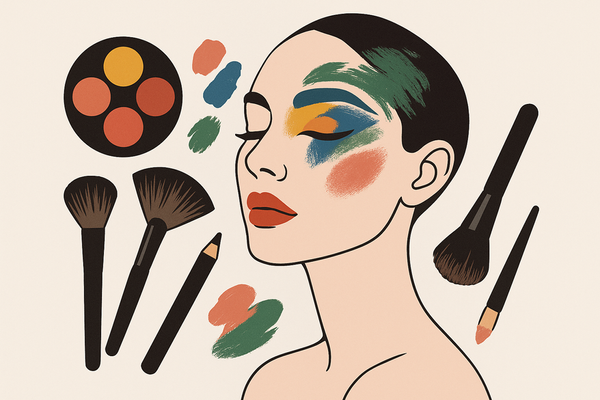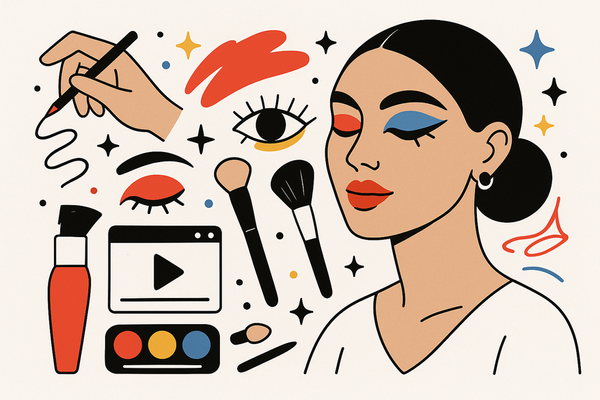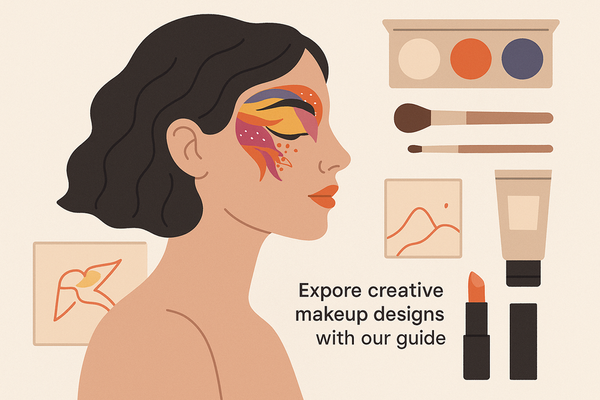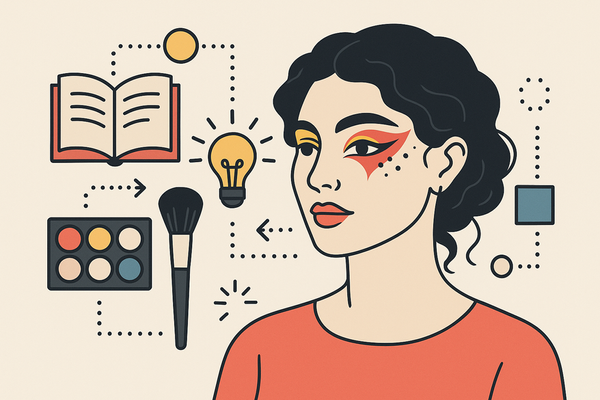Creative Makeup Designs: A Guide to Innovative Techniques and Trends
Unlock the artistry of creative makeup designs with innovative techniques and trends. Learn step-by-step guides, essential tools, and explore emerging styles.
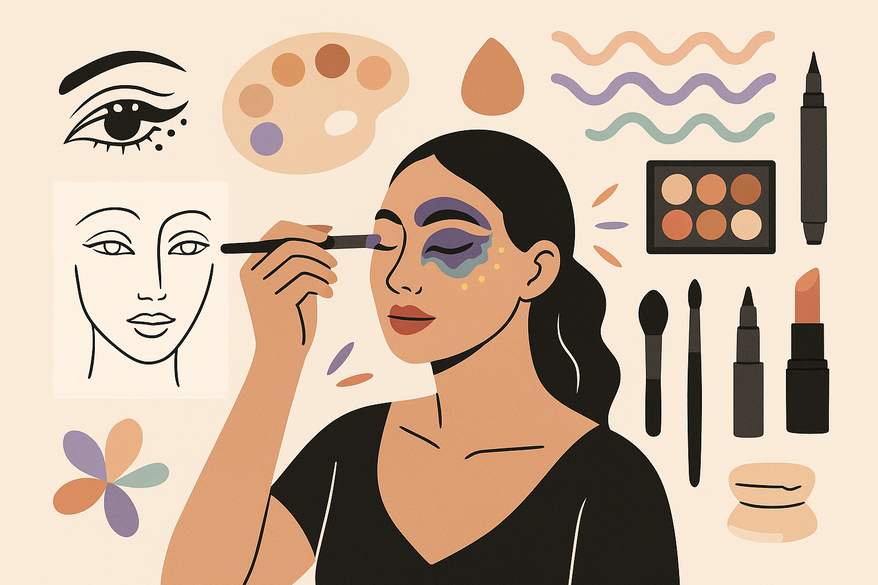
10-minute read
Key Takeaways
- Defining the Art: Creative makeup designs blend traditional beauty with performance art, narrative, and mixed media.
- Evolutionary Journey: From subtle contouring in the ’50s to avant-garde face sculptures today.
- Core Techniques: Contouring, airbrushing, graphic liners, glitter, and eco-friendly color blocking.
- Essential Tools: Precision brushes, airbrush kits, SFX materials, and sustainable products.
- Emerging Trends: Jewel-toned smoky eyes, architectural liners, VR-inspired face maps, and AI-driven color pairing.
- Best Practices: Start simple, use guides, prioritize skin health, and document your creations.
Table of Contents
- Section 1: What Are Creative Makeup Designs?
- Section 2: Evolution of Creative Makeup Designs
- Section 3: Key Elements and Techniques for Creative Makeup Designs
- Section 4: Essential Tools for Creative Makeup Designs
- Section 5: Trends and Inspirations for Creative Makeup Designs
- Section 6: Tips and Best Practices for Creative Makeup Designs
- Conclusion
Section 1: What Are Creative Makeup Designs?
Creative makeup designs are wearable masterpieces that merge pigment, sculpture, and storytelling. More than beauty looks, they serve as social commentary, cultural homage, or editorial statement. For an AI-powered twist on bold face art, check out Pushing Beauty Boundaries: Creative Makeup Designs with AI Makeup Generators.
Core Characteristics
- Unconventional color palettes (neon, pastels, duotones)
- Graphic liners (cut-creases, geometric shapes)
- 3D elements (pearls, silicone pieces, prosthetic accents)
- Special effects (fake blood, metallic foils, texture gels)
Narrative-Driven & Mixed-Media
Artists use glitter, feathers, fabrics, and tech accessories to tell a story—honoring heritage or critiquing pop culture.
Real-World Example
Runway artists paint entire faces with story arcs—landscapes, comic panels, or cultural symbols—transforming models into actors on a facial stage.
Source: Creative Makeup Designs 2025 Trends
Section 2: Evolution of Creative Makeup Designs
The journey of creative makeup designs spans decades, evolving from subtle sculpting to avant-garde explosions.
Timeline
- ’50s–’70s Early Phase: Soft shadows and lifted brows defined by Dior’s New Look.
- ’80s–’00s Editorial Era: Neon eyes and sharp cheek definitions dominated magazines and runways.
- 2020s Modern Phase: A fusion of SFX, performance art, and cultural storytelling, including prosthetic pieces and VR-inspired face maps.
Makeup artists have moved from flat palettes to sculptural approaches, making narrative and mixed media central to every look.
Source: Creative Makeup Designs 2025 Trends
Section 3: Key Elements and Techniques for Creative Makeup Designs
Contouring & Sculpting
Contouring uses darker shades to carve hollows; highlighting uses lighter shades to accentuate planes. Together, they sculpt the face.
- Map cheekbone hollows by smiling to mark the dip.
- Blend darker cream or powder with an angled brush (#12).
- Apply highlighter to the apex of cheekbones and brow bones.
- Blend edges softly for a seamless look.
Pro Tip: Use buildable, lightweight formulas to avoid patchiness and maintain dewiness.
Airbrushing
An aerosol compressor delivers ultra-fine foundation for a poreless finish.
- Equipment: 20–30 psi compressor, dual-action gun, silicone-free foundation.
- Technique: Hold 6–8″ from skin; use circular sweeps; build thin coats.
- Maintenance: Flush lines with cleaner after each session.
Graphic Liners
Precision shapes using gel or liquid liners for bold angles and cut-creases.
- Prime lids with an eye primer.
- Outline shape with fine-tip brush or stencil.
- Fill shape in layers for opacity.
- Clean edges with a cotton swab dipped in remover.
Tools: stencils for symmetry; precision brushes (sizes 0–2).
Glitter & Mixed-Media
Biodegradable glitter and 3D gels elevate textured highlights.
- Apply an adhesive base (glitter glue or gel).
- Press glitter with a silicone spatula.
- Seal with fixative spray to prevent fallout.
Bold Color Blocking
Contrasting pigments in geometric sections for drama.
- Plan shapes with low-tack tape.
- Apply base color; remove tape; blend edges softly.
- Add a second color in adjacent sections.
Sustainability Note: Opt for vegan pigments and biodegradable glitters from brands like EcoStardust and UNEarthly Glow.
Source: Creative Makeup Designs 2025 Trends
Section 4: Essential Tools for Creative Makeup Designs
Precision Brushes
- Liner Brush (#0) for fine lines
- Flat Shader (#4) for packing color
- Blending Brush (#12) for soft gradients
Cleaning Tips: Use gentle soap, reshape bristles, air-dry flat.
Airbrush Kits
- Compressor (20–30 psi)
- Dual-action airbrush gun
- Silicone-based makeup cartridges
Maintenance: Flush lines with cleaner; store in a dry, dust-free case.
SFX Materials
- Silicone prosthetics (wounds, shapes)
- 3D gels (veins, textures)
- Face appliqués (lace, studs)
Adhesives: Medical-grade spirit gum; professional prosthetic adhesive.
Eco-Friendly Products: Vegan pigments, biodegradable glitter, cruelty-free adhesives.
Certifications: PETA-approved, ECOCERT, Leaping Bunny.
Section 5: Trends and Inspirations for Creative Makeup Designs
Jewel-Toned Smoky Eyes
Rich shades of sapphire, emerald, and deep berry. Layer from light to dark; blend edges; add metallic pigment at center.
Source: Creative Makeup Designs 2025 Trends
Architectural Liners
Sharp angles framing the lash line with tape guides for crisp edges.
Source: Creative Makeup Designs 2025 Trends
Artistic Inspiration
Explore Artistic Makeup Inspiration: Unleashing Creativity with AI for mood boards and AI-driven color pairing.
Influential Artists & Platforms:
- Pat McGrath: Metallics and 3D elements pioneer.
- Ana Takahashi: Bold graphic shapes meet fine art.
- TikTok & Pinterest: Short tutorials and mood boards.
Real-World: At LA’s makeup festival, holographic pigments under UV lights illustrated runway-to-feed evolution.
Section 6: Tips and Best Practices for Creative Makeup Designs
- Start Simple: One-color graphic liner or single-block lids build confidence.
- Use Guides & Stencils: Tape edges and acetate stencils for repeatable shapes.
- Embrace Trial & Error: Photograph attempts, review, and log product combos in a makeup journal.
- Prioritize Skin Health: Non-comedogenic foundations, alcohol-free sprays, and patch tests.
- Professional Tip: Deep clean tools and sponges regularly to maintain hygiene.
Creative makeup designs offer a gateway to self-expression and storytelling. You now know the key techniques, essential tools, emerging trends, and best practices. Step into your studio, experiment boldly, and share your artworks online using #MyCreativeMakeupDesigns to join a community of innovators.

Powered by Makeup Check AI, your AI beauty companion.
FAQ
- What are creative makeup designs?
Wearable art pieces that blend makeup techniques with narrative, sculpture, and mixed media. - How can beginners start?
Begin with a single graphic liner or basic color block; gradually incorporate 3D elements and mixed media. - Which tools are essential?
Precision brushes, an airbrush kit, stencils, and eco-friendly glitter are must-haves. - Are sustainable products available?
Yes—look for vegan pigments, biodegradable glitters, and PETA-approved adhesives. - Where can I find inspiration?
Follow editorial artists like Pat McGrath, browse TikTok tutorials, and explore AI-driven mood boards.

